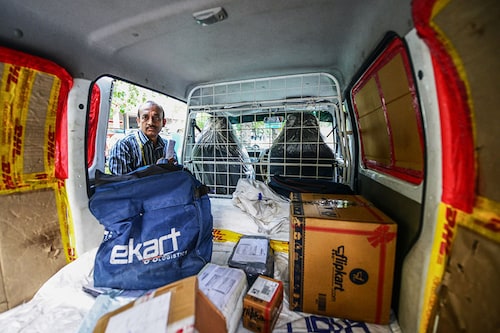Aspiration for premium brands driving ecommerce in small towns: Report
Consumers from Tier II and beyond spend more time and money shopping online than those in metros, says the latest report by PwC


India’s ecommerce market is expected to reach $200 billion by 2026, and consumers from Tier II, III and IV cities are going to be key drivers of this growth. A recent report by PwC India shows that consumers from Tier II-IV cities spend more time and money online shopping than those in Tier-I cities. The report shows that while the average basket size of consumers in Tier-I city for home and kitchen was worth Rs5,057,it was worth Rs6,097 for consumers from Tier II-IV cities.
The report points out that Tier II-IV cities consumers’ motivation behind online shopping differs fundamentally from those in metros. While the consumers in Tier-I cities opt for online shopping for better discount special offers and large crowds in the shopping malls, the aspiration for premium brands unavailable locally is the key motivation for online shopping for consumers in Tier II-IVs cities.
“The next phase of growth for ecommerce will be driven by the new digital savvy consumers of Tier II, III and IV cities in India. In contrast to urban dwellers, these individuals, constrained by limited access to physical stores and brand choices, consider online shopping a gateway to fulfil their aspirations," Somick Goswami, partner and business transformation leader at PwC India, said in a statement.
Social media is becoming the most successful platform for brand awareness among consumers in Tier-I as well as Tier II-IV cities. According to the report, about 58 and 68 percent of consumers from Tier-I and Tier-II-IV cities tried the products after seeing them on social media.
Social media influencers also significantly add to consumers’ purchase decisions, as per the report. The personal experience narrative of influencers greatly impacts brand awareness among consumers. Similarly, reviews and ratings from other customers play a crucial role in the confidence and selection of products.
“Consumers in Tier I, II, III and IV towns are looking at influencers to help them see what the product looks like so that when they receive it, they know it’s not a fake. We also saw that in tier two, three, and four towns, consumers are very sharp around fake reviews, and they tend to then not buy from websites where the reviews are more fake or sponsored reviews.", says Prateek Sinha, partner and leader—design and experience consulting at PwC India
The report shows that while the Tier-I cities consumers are using ecommerce for grocery, fashion and electronics shopping more than consumers in Tier II-IV cities, the latter have higher purchase rates of beauty and health products, home and kitchen appliances and sports and fitness products then the Tier-I consumers. Quick commerce is not yet working out in small towns, and their consumers have different reasons to buy groceries online than those in Tier-I cities. Sinha says that for groceries, it’s either bulk items because the pricing is better or slightly exclusive items that are being picked up in smaller towns.
Consumers in Tier-I as well as Tier II-IV cities are increasingly using unified payments interface (UPI) for payments. As per the report, about 34 and 30 percent of consumers in Tier I and Tier II-IV cities pay via UPI. Cash on Delivery remains much preferred among consumers in Tier II-IV cities, as 34 percent pay cash on delivery. Sinha says that consumers prefer Cash on Delivery due to trust deficiency, and they are worried that they will get their money back if something goes wrong. “In tier two towns, people feel they don’t have as much of a recourse. With cash on delivery, (consumer feels that) the control is with me. If it comes, and I see that it’s good, then I’ll give money.", adds Sinha.
First Published: Mar 04, 2024, 16:39
Subscribe Now